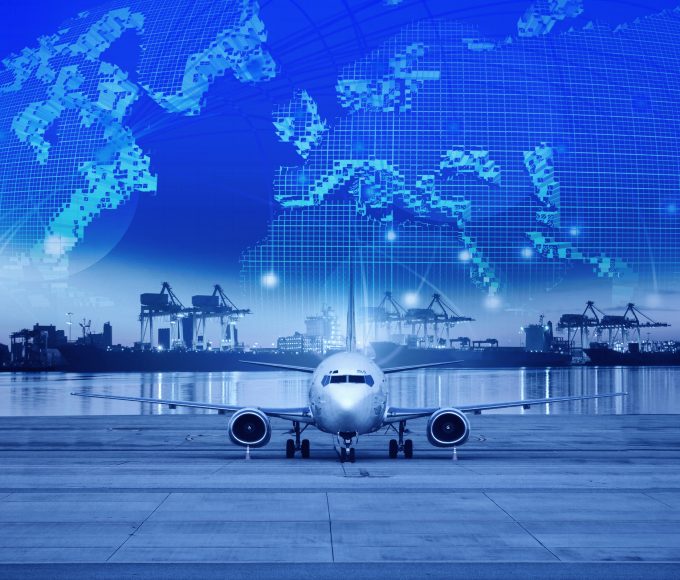USEC dispute end comes too late to stop transpacific spot rate climb
Container spot freight rates on the main east-west trades continued on divergent paths this week, ...
F: MAKING MONEY IN CHINAMAERSK: THE DAY AFTERDHL: NEW DEALGXO: NEW PARTNERSHIPKNIN: MATCHING PREVIOUS LOWSEXPD: VALUE AND LEGAL RISKMAERSK: DOWN SHE GOESVW: PAY CUTFDX: INSIDER BUYXOM: THE PAIN IS FELTUPS: CLOSING DEALSGXO: LOOKING FOR VALUE
F: MAKING MONEY IN CHINAMAERSK: THE DAY AFTERDHL: NEW DEALGXO: NEW PARTNERSHIPKNIN: MATCHING PREVIOUS LOWSEXPD: VALUE AND LEGAL RISKMAERSK: DOWN SHE GOESVW: PAY CUTFDX: INSIDER BUYXOM: THE PAIN IS FELTUPS: CLOSING DEALSGXO: LOOKING FOR VALUE

The latest logistics indicator, the APAC Forwarding Index, has thrown up some interesting predictions, which appear to contradict what is being reported in the market.
Launched by the well-respected Cathy Roberson, of Logistics Trends & Insights, and Mike King, of Mike King & Associates, the index is currently under development and hopes to launch fully later in the year.
Thought to be based on about 350 respondents, the APAC index suggests that just 22% of them predict higher volumes on Asia Pacific air freight tradelanes in September than in June, while 38% forecast lower volumes.
“In the next three months, we are hopeful of some growth in air cargo demand, but we expect rates to be flat,” wrote one respondent. “We’re not expecting a major change until Q4.”
However, forwarders have told The Loadstar that airlines operating in Asia were “trying it on” – hoping to push rates up. A forwarder said one major carrier had quoted such a high rate per kg for September that the customer decided it was cheaper to charter a whole aircraft.
Added to this, a hi-tech surge is reportedly on its way. A major air freight forwarder reports that one tech shipper is already facing delays, and already has a cargo backlog, having been unable to secure space at a rate it wanted – and that is before major hi-tech launches due in the third quarter.
The Apple iPhone 10-year anniversary edition is expected in September, creating capacity demand. In addition, Amazon’s Kindle range is undergoing several product launches, with more expected.
Several carriers have said they have no spare capacity for charters for the rest of the year. And then, of course, there are the apparently year-round e-commerce volumes.
So it’s surprising that more respondents forecast lower volumes in September than June. Unless, perhaps, they are not involved in the hi-tech or e-commerce trades, or there are other factors at play.
However, on European lanes things were a bit more optimistic, with 34% of respondents on the Europe-APAC lane expecting higher volumes in September than June. But 47% expect APAC-Europe volumes to be “the same” and only 19% expect them to be higher.
It’s much the same in North America, according to the index, with 22% predicting higher volumes on Asia-North America, and 41% forecasting lower.
The index reported that month-to-month air freight volumes saw slower growth last month: 41.4% of respondents recorded higher air freight volumes on APAC air freight lanes in June than in May, while 35.2% noted lower volumes.
Ms Roberson said: “After two months of 50%-plus noting higher month-to-month volumes optimism is dimming; 41.4% is the lowest response we have recorded noting higher APAC air freight volumes in our first four months of surveys.
“Meanwhile, the number of respondents, 35.2%, noting lower air freight volumes month-to-month was a sharp increase from the 5% noting the same from April to May.”
IATA noted today that the outlook for air freight demand in the third quarter was up 8% year-on-year, while demand was up 12.7% in May. And Transport Intelligence’s Air Freight Logistics Expectations Index also reported a growth in volumes in the “expected situation”, on all lanes except Europe-US.
On the ocean, the APAC Index appears to suggest that peak seasons have shifted to earlier in the year. Only 35.7% of respondents predicted higher freight volumes on ocean freight APAC lanes in September than in June, while 31.2% anticipated lower volumes.
On the APAC-North America head-haul trade, 38% of respondents predicted higher volumes in September compared with June and 42% lower. Meanwhile, 58% of respondents anticipate the same volumes on the backhaul, North America-APAC, trade.
According to the index, “the fall in optimism chimes with recent ocean spot freight rate declines on the major trades” – although the SCFI last week finally jumped 11.5%.
“Could peak season patterns be shifting or is this the result of global economic uncertainties?” asked Ms Roberson. “There certainly seems to be uncertainty about how strong and long this year’s ocean peak season will be, and the readings on the transpacific and Asia-Europe have diverged.
“Spot freight rates have been volatile and bearish on headhaul trades in recent weeks and the economic signs on exports out of Asia have been mixed. It will be very interesting to see how ocean volumes fare in July and August and how this plays out in liner markets.”
Rail, meanwhile, saw strong growth.
“Gains in rail were strong with 78% of respondents reporting higher volumes as China’s ‘One Belt, One Road’ initiative gains traction,” said Ms Roberson.
Comment on this article